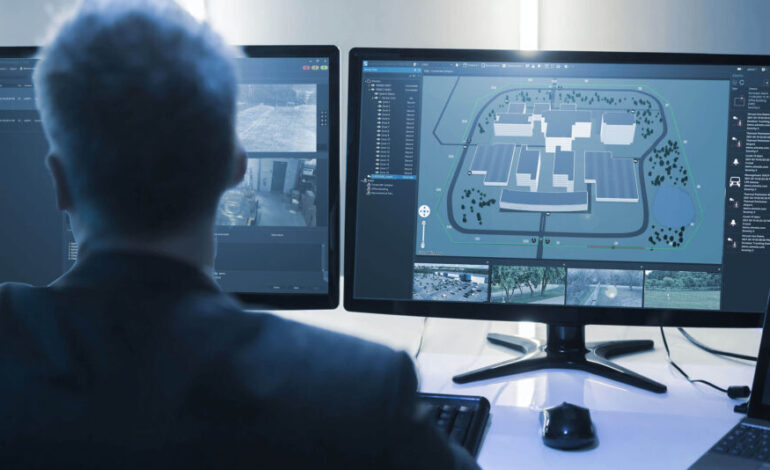
How Security Management Platforms Simplify Operations and Improve Response
Managing security operations can often feel overwhelming. With multiple systems, diverse teams, and an endless flow of data, how do you keep everything running smoothly while ensuring swift, accurate responses to incidents? This is where security management platforms step in to transform chaos into clarity.
In this blog, we’ll explore how these platforms simplify operations, enhance decision-making, and ultimately improve response times. If you’ve ever wondered how to streamline your security processes, you’re in the right place.
What Is a Security Management Platform?
A security management platform is an integrated system designed to centralise, organise, and automate your security operations. These platforms connect various security tools—alarms, sensors, cameras, and communication channels—into a single, unified interface.
But it’s not just about pulling everything into one place. The real power lies in how these platforms allow you to define workflows, automate responses, and use data to make informed decisions. Whether you’re overseeing a single site or managing security across multiple locations, a robust platform can save you time, resources, and stress.
The Key Benefits of Using a Security Management Platform
Wondering what a security management platform can actually do for your operations? Let’s break it down:
1. Centralised Operations – Everything in One Place
Gone are the days of jumping between systems. With a security management platform, alarms, camera feeds, and team communications are accessible in a single interface. This reduces complexity and makes it easier to manage operations efficiently.
2. Faster Response Times – No Delays
When an alarm goes off, every second counts. These platforms enable automated workflows that notify the right people immediately—via SMS, push notifications, or calls. This eliminates delays and ensures incidents are addressed as quickly as possible.
3. Enhanced Communication – Keeping Everyone in Sync
Miscommunication can slow down your team’s response or even lead to mistakes. A security management platform ensures everyone is on the same page, providing real-time updates and clear task assignments.
4. Reduced Errors – Automation at Work
Human error is inevitable, especially during high-pressure situations. By automating repetitive tasks, such as verifying alarms or notifying specific teams, you can drastically reduce the likelihood of mistakes.
5. Data-Driven Insights – Smarter Decision-Making
Security platforms collect and analyse data from all connected systems, presenting it in an easy-to-digest format. Whether it’s a dashboard showing incident trends or a detailed report on system performance, this data helps you make informed decisions and plan for the future.
How Security Management Platforms Streamline Processes
Imagine trying to manually handle every alarm, track each team member’s location, and ensure compliance across sites. It’s exhausting to even think about. Here’s how security management platforms make it easier:
Workflow Automation
With pre-defined workflows, you can automate the entire process from alarm detection to resolution. For example, if an intruder alarm is triggered, the system can immediately notify the nearest security officer, send alerts to management, and even provide instructions on next steps—all without manual intervention.
Scalable Solutions
Whether you’re a small business or managing a global enterprise, these platforms can scale to fit your needs. Adding new sites or integrating additional devices is seamless, so you’re always prepared for growth.
Plug-and-Play Integration
The days of complex installations are over. Most platforms now operate on a browser-based interface, meaning you don’t need specialised hardware. They also integrate easily with your existing tools, from cameras to communication apps, making adoption hassle-free.
Why a Unified Platform Is Crucial for Modern Security
Think about the impact of siloed systems on your operations. If your alarm system doesn’t communicate with your cameras, or if your team has to manually relay updates, valuable time is lost. A unified platform solves these issues by ensuring all components work together seamlessly.
This integration isn’t just about convenience—it’s about creating a system that actively enhances your ability to respond. For example, when an incident occurs, the platform can combine data from alarms, video feeds, and access logs to provide a complete picture of the situation. This helps your team make the right decisions faster.
Choosing the Right Platform for Your Needs
Not all security management platforms are created equal. Here are some features to look for when deciding which one is best for you:
- Ease of Use – A complicated system defeats the purpose. Choose a platform with an intuitive interface that your team can quickly adapt to.
- Automation Capabilities – Look for a solution that allows you to create custom workflows to handle repetitive tasks.
- Scalability – Whether you need to secure a single site or hundreds, the platform should grow with you.
- Integration Options – Ensure it supports your existing security devices and software.
- Compliance and Certification – Check for certifications that demonstrate reliability and data security.
These factors will help you narrow down your options and invest in a platform that truly meets your operational needs.
Making Security Simpler, Smarter, and More Effective
Have you been considering upgrading your security operations? If so, now might be the perfect time to explore what a centralised platform can offer. With the right system in place, you’ll wonder how you ever managed without it.




